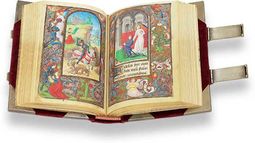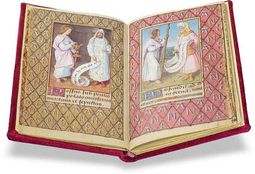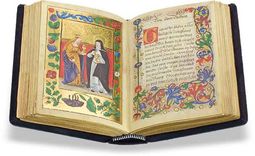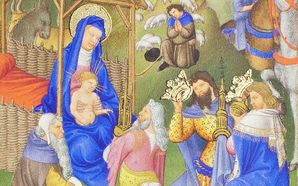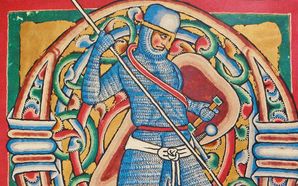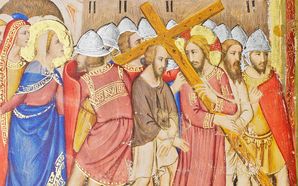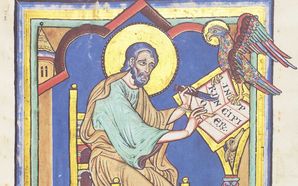Prayer Books
Although the book of hours was far and away the most popular form of illuminated private devotional manuscript – or any manuscript for that matter – other kinds of customized prayer books were created. They typically took the form of small codices designed to be carried on one’s person and often contained references to its patron in the form of portraits, coats of arms, or other dynastic symbols such as the Prayer Book of Charles the Bold.
Regardless of size, both the artistic adornment and the arrangement of texts reflected the personal taste of the manuscript’s patron. Aside from depicting religious scenes, the miniatures of these works often give us intimate portrayals of contemporary daily life, making them important historical sources in addition to being great works of art and religious devotion.
Demonstration of a Sample Page
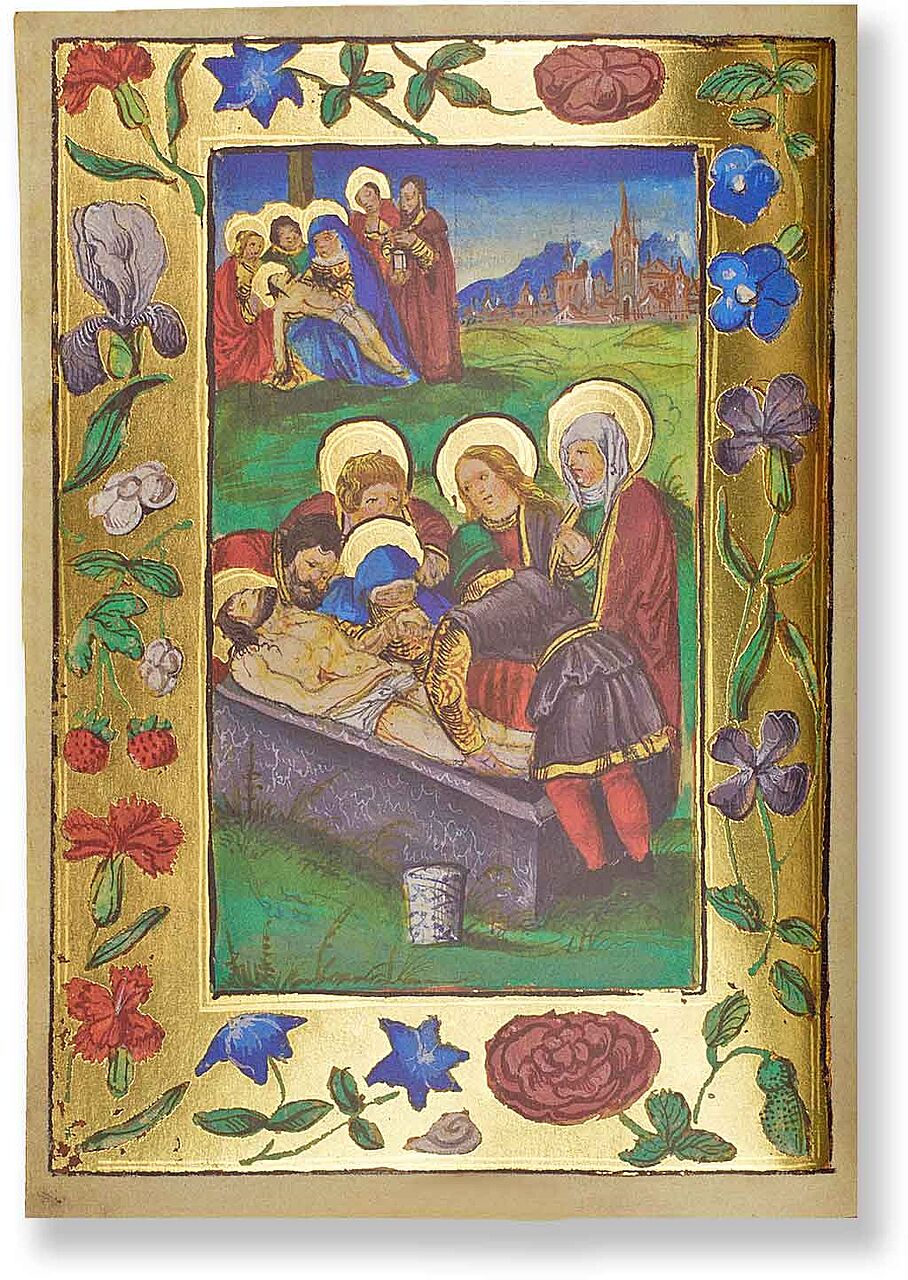
German Prayer Book of the Margravine of Brandenburg
Lamentation and Entombment of Christ
The burial of Jesus, referred to as the “Entombment of Christ” in art history, is both one of the earliest recorded and most widely corroborated facts about his life and a popular artistic subject in Western Europe since the 10th century. This full-page miniature shows the Virgin Mary dressed in her iconic blue, kissing her son's hand as he is lowered into the sarcophagus.
In the background, the Lamentation is shown as it first began to be depicted in the 11th century: Mary is seated holding Christ’s body across her lap and surrounded by Joseph and others with the cross behind them. This more prominent position for the Mother of God became the standard form in Western Gothic art as part of the growth of the Marian cult in the Late Middle Ages.

